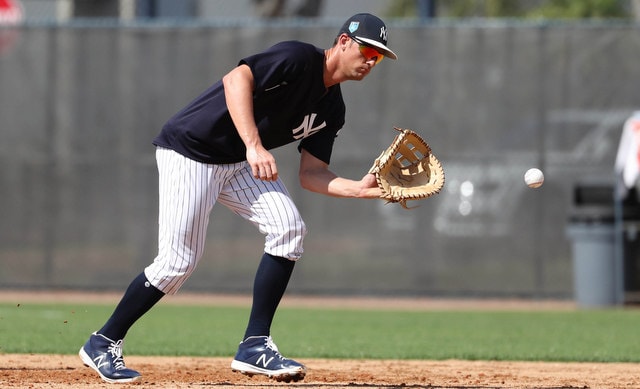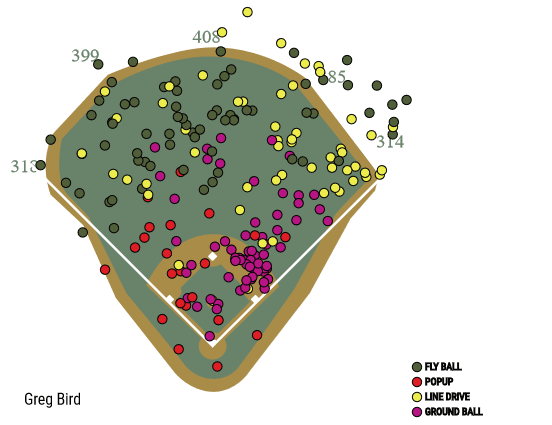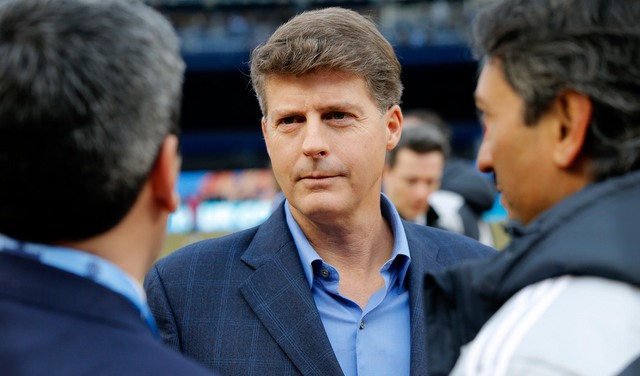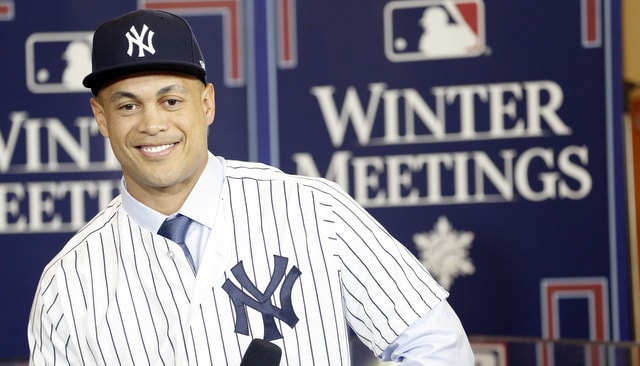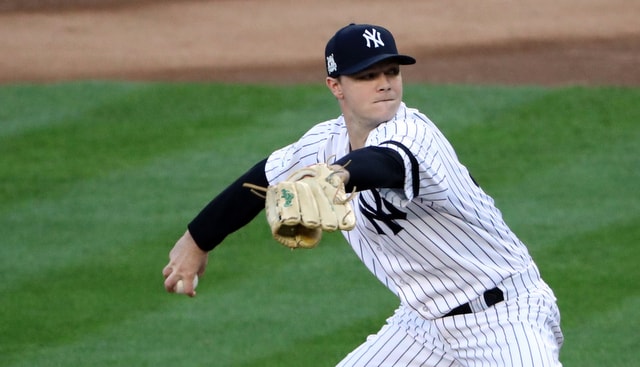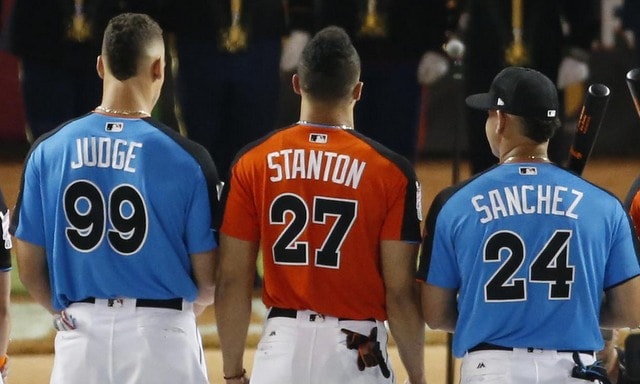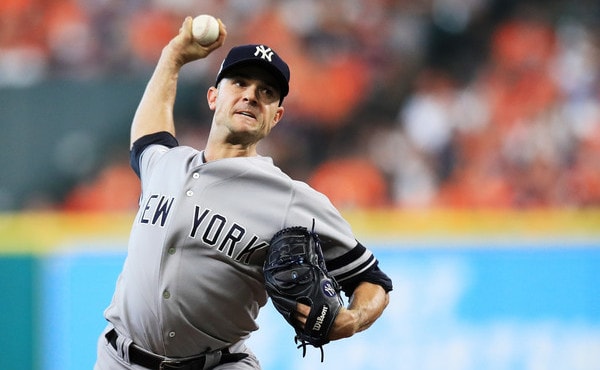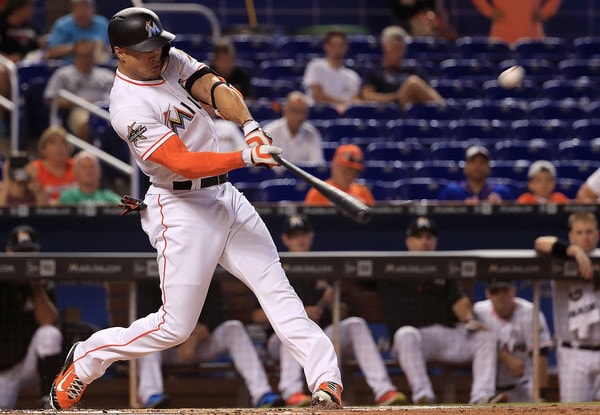
The coming season represents take three for Greg Bird’s first full season in pinstripes. That may seem a bit misleading, if not an outright exaggeration, but that is how the 25-year-old’s career has progressed thus far. Bird was slated to be the team’s starting first baseman in 2016, but was felled by a torn labrum that February, and didn’t take an at-bat until that year’s Arizona Fall League. He raked in last year’s Spring Training (.451/.556/1.098 with 8 home runs), and batted third in the team’s Opening Day lineup. To say that things were looking up would have been an understatement.
And then Bird hit .100/.250/.200 through May 1. He was placed on the DL with an ankle injury the next day, underwent surgery for said injury in July, and didn’t appear in another game until August 26. It was very nearly another lost season, and it was riff with questions about both Bird’s durability and his commitment to winning and/or the team. That latter part was inane, to say the least – but his inability to stay on the field was disconcerting, to say the least. Nevertheless, with a month and change left in the season and the playoffs all but guaranteed, the stage was set for Bird to remind us of his potential.
He Is Who We Thought He Was
Bird went 1-for-4 with a walk in his first game back, and that effectively set the tone for the rest of the regular season. He hit .253/.316/.575 (128 wRC+) with 8 HR in 98 PA as the Yankees sailed into the playoffs, closing the season by reaching base safely in ten straight games. And that was essentially the baseline that he established in his big league debut back in 2015. To wit:
- 2015 debut: .261/.343/.529, 10.7% BB, 29.8% K, .268 ISO, 21.9% LD, 51.5% FB
- 2017 post-injury: .253/.316/.575, 9.2% BB, 20.4% K, .322 ISO, 21.7% LD, 47.8% FB
The most noteworthy difference once adjusting for the difference in offensive levels is the strikeout rate, which went from well below-average to a tick above-average (in the right direction). The usual small sample size caveats apply, but it’s a good sign nonetheless. And his strong performance (and then some) continued into the playoffs, as he batted .244/.426/.512 with 3 HR in 54 postseason plate appearances.
Fun With Selective Endpoints
We can’t just write off Bird’s awful performance in the first month of 2017; at the same time, however, we know that he was hurt within the first few games of the season, and it was clear that he was playing hurt. With that in mind, here are his “healthy numbers:” .256/.348/.540, 22 HR, 12.1% BB, 27.2% BB in 330 PA. That’s a summation of 2015, post-injury 2017, and the 2017 postseason, and it’s not too far off from Gary Sanchez’s 2017 (.278/.345/.531, which was good for a 130 wRC+).
The clearest data point in favor of Bird playing hurt, for what it’s worth, is exit velocity. His 2015 average exit velocity was 93.0 MPH, which ranked fourth in the majors among players with at least 100 batted ball events. Prior to hitting the DL last year, his exit velocity sat at 87.7 MPH, which is right around the league-average. Bird’s exit velocity rebounded in a big way following his return, sitting at 91.1 MPH down the stretch, and then right around 92 MPH in the playoffs. Exit velocity isn’t everything, but the fact that Bird’s is clearly on another level when he’s healthy is an important consideration.
Even with that horrendous month, which represents a tick over 20% of his career plate appearances, Bird is a career .227/.316/.477 (112 wRC+) hitter. The average first baseman has posted a 111 wRC+ over the last three seasons, so a pragmatic outlook may simply be that he’s basically an average producer at the position with the highest offensive baseline in he league. And that’s not all that bad.
The Projection Systems
- Steamer: .253/.342/.492, 26 HR, 11.2% BB, 22.1% K, 483 PA
- ZiPS: .240/.333/.480, 19 HR, 11.8% BB, 25.3% K, 372 PA
- PECOTA: .247/.333/.469, 28 HR, 10.6% BB, 23.9% K, 577 PA
Steamer and ZiPS both show concern about Bird’s injury history, which isn’t terribly surprising. He has dealt with injuries throughout his professional career, and, even if he’s healthy, the Yankees will probably make sure that he gets regular rest as a result. That being said, the projection systems are basically taking Bird’s career production and extrapolating it out over a full(ish) season, and that’s sensible. For as many great memories as he’s made in his brief big league career, Bird remains relatively unproven.
My Take
I am extremely confident in Bird’s ability to be an above-average hitter, even relative to his position. That’s what he did in the minors, and that’s what he has done when healthy in the majors. Factor in his flyball tendencies and his propensity for pulling the ball with authority, and there’s precious little to worry about when he’s in the lineup. That being said, questions about his ability to stay on the field abound, and cannot be easily pushed out of my mind. I think that he will get on-base and hit for power – and I will be ecstatic if he can play 130 games this season.
